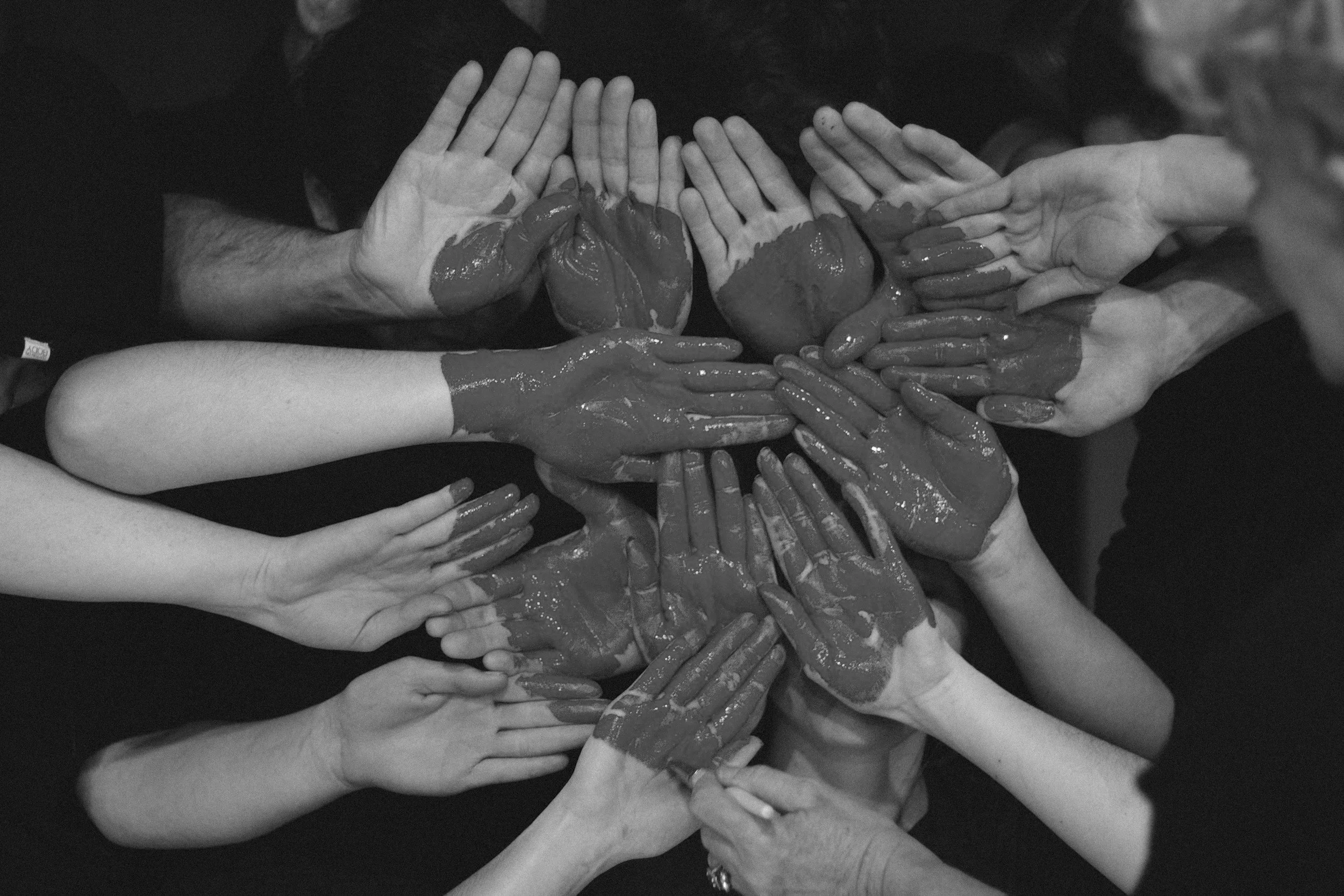Therapy for Trauma & Abuse in Saskatoon
We can help you heal and recover.
Emotional pain blocks us from being able to connect with ourselves and others. Our counsellors and therapists are ready to help you rediscover wholeness and connection.
Starting your Healing Journey
It takes a lot of strength and courage to reach out for support when we are hurting. At SoulSoothe, we honour our client’s journeys towards healing, recognizing that everyone has a unique story, experience, and ultimately a unique way that they need to heal and recover. Often… we’re not your first attempt at trying to feel better, and we respect that. We want to help you find what you need to start feeling like you again. Our team is ready to hold space for you and listen with open hearts. Each of us has walked through our own pain towards wholeness again—and we want to help you do the same.
What is Trauma?
Trauma is any event that overwhelms you with emotional pain, leaving a lasting imprint on the body and soul. We like to emphasize the “any” part, because many people come to us feeling uncomfortable with acknowledging that what they went through was traumatic. Each of us has our own ideas of what is or isn’t “trauma”… but our team of trauma-informed professionals recognize that your experience doesn’t need to fit into the typical categories for the event or experience to be incredibly painful and debilitating.
After we experience a traumatic event, our body and soul always develop ways to protecting us from further pain. We might experience anxiety or panic attacks, numbness or depression, avoid certain situations, self-medicate with substances, struggle to control anger and other emotions, or have difficulties in our relationships. Though these behaviours or responses do not necessarily mean we have experienced trauma—it is common for these things to be present after someone experiences a traumatic event.
Different Kinds of Abuse
Here are some different kinds of abuse:
Physical Abuse – This involves any form of physical harm or injury inflicted upon a person. It can include hitting, punching, kicking, slapping, or using objects to cause harm.
Emotional or Psychological Abuse – This type of abuse involves behaviors aimed at undermining an individual's self-esteem, self-worth, or emotional well-being. Examples include verbal attacks, humiliation, manipulation, intimidation, and threats.
Sexual Abuse – Sexual abuse encompasses any unwanted sexual activity or behavior imposed on an individual without their consent. This can include rape, molestation, sexual assault, coercion, or exploitation.
Financial Abuse – Financial abuse involves the exploitation or misuse of an individual's financial resources or assets. This can include theft, fraud, coercion, withholding funds, or controlling finances without consent.
Neglect – Neglect occurs when a caregiver fails to provide adequate care and support for someone who is dependent on them. This can include neglecting basic needs such as food, shelter, medical care, hygiene, or emotional support.
Spiritual Abuse – This type of abuse involves using religious or spiritual beliefs to manipulate, control, or harm others. It may include forced participation in religious activities, exploitation of beliefs for personal gain, or using religious teachings to justify abusive behavior.
Digital Abuse – With the increased use of technology (especially among younger generations) digital abuse or online exploitation has become more prevalent. It involves using technology, such as smartphones, social media, or the internet, to harass, stalk, monitor, or control someone.
Abuse is specific form of traumatic experience. It carries with it a unique set of painful emotions because it happens within the context of relationship. When someone we know and trust inflicts harm on us, there is a ripple effect throughout our whole self that can have a deeply painful and lasting impact. This is especially devastating when the abuse happens during childhood. Many survivors of childhood abuse have deeply entrenched ways of protecting themselves from the re-experiencing the pain or have blocked out portions of their early years that were particularly difficult.
Our trauma-informed therapists can gently work with you and your emotional pain, helping you to let go of these burdens and begin to feel like yourself again.
Common to all forms of abuse are feelings of anger, betrayal, violation, disgust (with the act, the perpetrator, or oneself), shame, guilt, or fear. As strange as it may seem, each of these emotional responses is our mind’s best attempt at making sense of a painful event that simply doesn’t make sense.
However, by working with a trauma counsellor, you will be able to sift through the confusion and pain, to finally make sense of what has happened and know how to move forward.
Post-Traumatic Stress Disorder (PTSD) & Complex PTSD
Post-Traumatic Stress Disorder (PTSD) is a condition that may develop after experiencing or witnessing a traumatic event. The symptoms of PTSD can vary widely from person to person, including:
Intrusive thoughts/memories or flashbacks
Nightmares
Avoidance of places, people or activities associated with the traumatic event
Strong negative thoughts or emotions (e.g. guilt, shame, fear)
Difficulty concentrating
Memory problems
Anger outbursts or irritability
Difficulty sleeping
Hypervigilance (being constantly on edge) or being easily startled
Dissociation
People struggling with PTSD may also experience dissociation, which is the experience of being separated from oneself or one’s surroundings. Some common experiences people have are numbness or depression, tunnel vision, feeling stuck or frozen in place, or feeling like you are temporally a different person. These experiences can be incredibly frightening and debilitating, but our trauma counsellors are trained to work with these difficult to manage trauma symptoms.
Complex PTSD
Complex PTSD (C-PTSD) is a specific form of PTSD that may result from experiencing prolonged or repeated trauma. This can include experiences such as childhood abuse, intimate partner violence, bullying in school, or even harassment in the workplace. The prolonged and repeated nature of these painful experiences leads to additional challenges with emotional regulation, interpersonal relationships, and a distorted sense of self
“Trauma blocks love. Love heals trauma.”
– Frank Anderson, MD
Trauma Therapy
There is no one “right” way to heal and recover from trauma, but there are some important parts of the process. This being said, the overarching goal of trauma work is to help the nervous system release the emotional energy it is holding onto and to return (rewire) to a calm, relaxed state. Every counsellor or therapist has their own approach to this goal, so it is important to talk with them about how they will handle your vulnerable and often intense emotions.
1. Working with “Protectors”
After experiencing a traumatic event, the mind and body always develop ways to protect the person from further pain. At the start of trauma therapy, it is important for therapists and clients to work with these “protectors” before going into the pain. The effectiveness of the other steps in the healing process will be limited if the nervous system is unable to remain in a calm state. This step looks different for everyone, but it may include growing in self-awareness of your own inner protection system and developing some calming strategies to use when a part of you gets triggered.
2. Witnessing and Understanding the Pain
The next step in healing trauma is to start connecting with the uncomfortable emotions attached to the traumatic event. This is often a scary idea at first, but remember… before we get to this step, you will have already worked on calming your self down enough to be able to connect with the pain and not be overwhelmed. We’re not interested in “retraumatization” or reliving painful experiences—there is noting therapeutic about this. It is important for these traumatized parts of body and soul to be fully seen and understood as part of the healing process.
3. Corrective Experiences
This is arguably the most important step of the healing process. Once it feels like you have fully felt and understood the emotions of the traumatic event, then it is time for the body and soul to have a corrective experience. In other words, you get to experience what it is that you needed in the original trauma event. This creates a new pattern of thoughts and emotions associated with the traumatic memory, one that feels safe and calming.
4. Integration & Reinforcing New Experiences
Lastly, your therapist will work with you to help this new way of experiencing the traumatic memory to stick. You will experience and learn ways to reinforce this calm and relaxed way of being, and how to continue to soothe your nervous system as the memory gets triggered in the future. You will still be able to remember the trauma, but the negative or painful emotions won’t be anywhere near as intense or debilitating.
Ready to take the first step towards wholeness?
Connect with us for a free consultation or look at the other counselling services we offer in Saskatoon and online.










